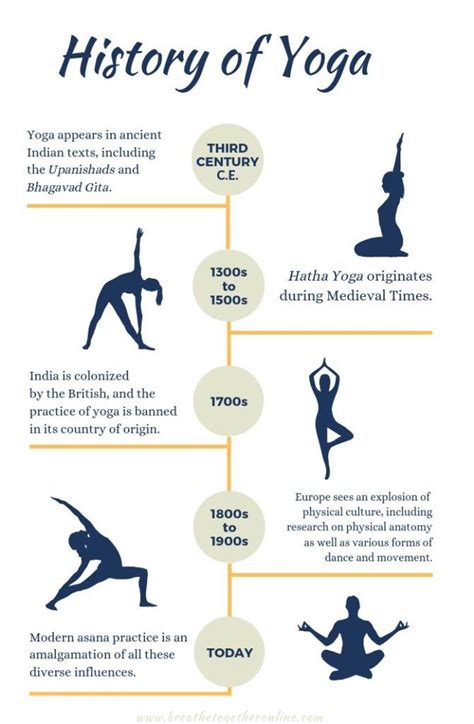Unveiling the Deep History of Yoga: A Journey Through Time in 5 Minutes
Yoga, often associated with modern wellness trends, boasts a rich and complex history that spans over millennia. From its roots in ancient Indian traditions to its global influence today, understanding the evolution of yoga gives deeper insight into its practice. While a full appreciation requires time, this article breaks down the essential historical milestones and contextual analysis of yoga into a digestible format, highlighting the transformation it has undergone.
Introduction: What is Yoga?
At its core, yoga is more than just physical exercise; it is a spiritual, mental, and physical discipline designed to harmonize the body and mind. Though its practice is now a staple in gyms and studios around the world, yoga’s historical journey is intertwined with philosophy, religion, and health. To fully appreciate this evolution, let’s take a closer look at its key developments.
Key Concepts: The Foundations of Yoga Practice
- Asanas: The physical postures practiced in yoga.
- Pranayama: Breathing techniques essential to managing life force energy.
- Dhyana: Meditation aimed at achieving higher states of consciousness.
- Samadhi: The ultimate goal, a state of spiritual enlightenment.
These concepts have been central to yoga since its inception, evolving through time while maintaining their essence.
Historical Context: Yoga’s Ancient Roots
Yoga originated in India more than 5,000 years ago, though its exact timeline is debated among scholars. The earliest references to yoga can be found in the Rigveda, one of the oldest sacred texts in Indian culture.
| Era | Milestones | Impact |
|---|---|---|
| Pre-Vedic Period | Early forms of meditation and rituals | Primitive practices of controlling the mind and body |
| Vedic Period | Rigveda references to yoga, Brahmanic rituals | Focus on spirituality and the self |
| Upanishads (800 BCE – 200 BCE) | Emergence of philosophical yoga, key texts like Katha and Chandogya Upanishads | Shift from ritualistic practices to introspective and meditative practices |
| Classical Yoga (200 BCE – 500 CE) | Yoga Sutras of Patanjali | Formation of the classical eightfold path (Ashtanga Yoga) |
| Post-Classical Yoga (500 CE – 1700 CE) | Development of Tantra Yoga, Hatha Yoga | Incorporation of body-centric practices |
Current State Analysis: Yoga’s Global Popularity
Today, yoga has become a global phenomenon, especially in the West, where it is often practiced for fitness and stress relief. The global wellness industry has capitalized on yoga, turning it into a multi-billion-dollar industry. However, many of its philosophical underpinnings have been watered down or forgotten entirely. This shift has sparked debate about the true essence of yoga and its commercialization.
Practical Applications: Yoga in Modern Life
Yoga is commonly associated with physical fitness, but its benefits extend beyond the body to mental and emotional well-being. With practices like mindfulness and breath control, yoga helps manage stress, anxiety, and improve overall health. Some applications of modern yoga include:
- Therapeutic yoga for mental health issues
- Yoga as a supplementary practice for athletes
- Yoga in corporate wellness programs to reduce stress
Case Studies: How Yoga Transforms Lives
| Case Study | Description | Results |
|---|---|---|
| PTSD Recovery in Veterans | Yoga used as a treatment for trauma in war veterans | Significant reduction in anxiety and improved emotional regulation |
| Corporate Wellness | Large tech firms integrating yoga into employee wellness programs | Improved focus, reduced stress levels, and higher productivity |
| Yoga in Schools | Incorporating yoga and mindfulness into elementary school programs | Better concentration, reduced hyperactivity, and emotional stability in students |
Stakeholder Analysis: Who Benefits from Yoga?
- Individuals: Practitioners benefit from improved physical health, mental clarity, and emotional stability.
- Corporations: Wellness programs enhance employee productivity and reduce burnout.
- Healthcare providers: Yoga is increasingly recognized as an alternative therapy for various conditions.
- Yoga Studios and Instructors: The commercial yoga industry continues to grow, offering numerous opportunities.
Implementation Guidelines: How to Incorporate Yoga into Your Routine
Starting a yoga practice doesn’t have to be overwhelming. Follow these guidelines to gradually incorporate yoga into your daily life:
- Begin with basic postures and focus on breathing techniques.
- Practice regularly, even if it’s just 10-15 minutes a day.
- Join a local class or use online resources for guided sessions.
- Gradually explore different types of yoga to find the one that suits you best.
- Remember that yoga is a holistic practice, so engage with its mental and spiritual aspects, not just the physical.
Ethical Considerations: The Commercialization of Yoga
As yoga has expanded globally, its commercialization has led to ethical concerns. Critics argue that the spiritual roots of yoga have been diluted by its commercialization. The rise of “yoga influencers” on social media has also shifted focus away from self-discipline and mindfulness toward physical aesthetics. Balancing the preservation of traditional practices with modern adaptations remains a critical challenge.
Limitations and Future Research
While yoga has been widely researched for its health benefits, there are still gaps in the literature. For example, there is a need for more rigorous studies on the long-term effects of yoga on mental health, and its efficacy in treating specific medical conditions. Additionally, as the practice continues to evolve globally, there is a growing interest in exploring how cultural appropriation impacts its spread and adaptation. Future research should also explore how to maintain the balance between modern innovation and the preservation of traditional yoga practices.
Expert Commentary
According to renowned yoga scholar Dr. John Stevens, “Yoga’s evolution mirrors the changes in human society itself. From a spiritual quest to a wellness trend, it has continuously adapted to the needs of its practitioners. However, we must ensure that this adaptation does not lose the essence of what yoga truly is—a practice aimed at the union of body, mind, and spirit.”
Another expert, Sarah Gupta, a certified yoga instructor and historian, adds, “Yoga today represents a beautiful fusion of the ancient and modern. But there is a need to acknowledge and respect its origins. The responsibility lies on practitioners to dig deeper into the history of yoga, so they can not only reap its physical benefits but also appreciate the rich philosophy that has kept this practice alive for thousands of years.”








